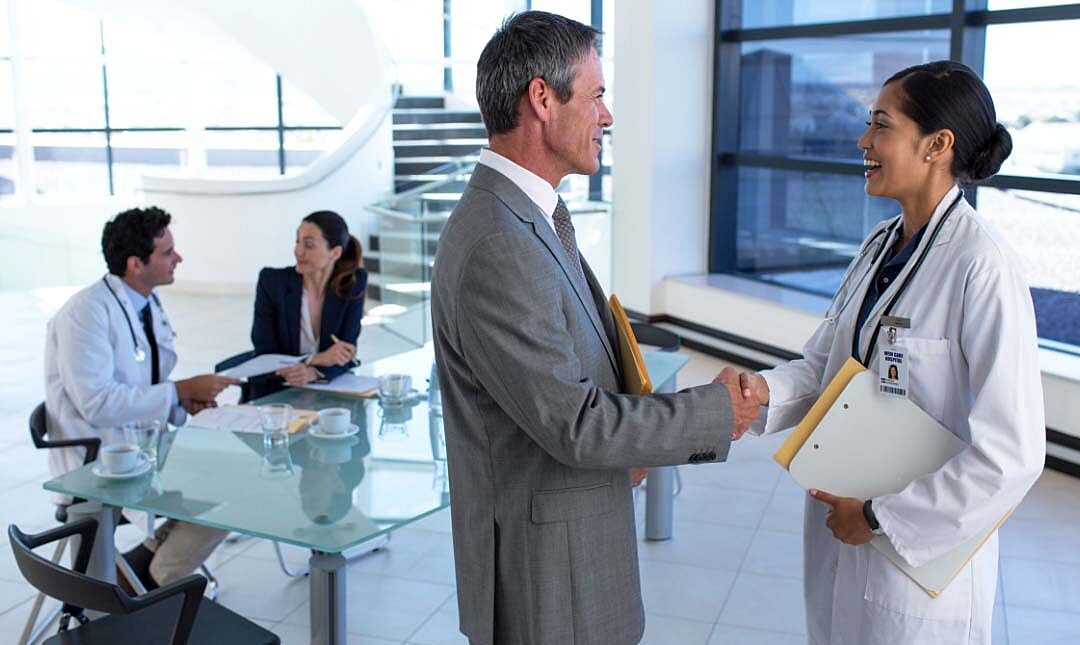RTLS Strategy Initiatives for Hospital Executives

When you have a veteran healthcare executive like Caryn Hewitt on your team, you can’t miss an opportunity to invite them to share their experiences.
Caryn, who is a Registered Nurse, held executive positions at a leading healthcare system in the Midwest – Sanford Health. Over the span of almost 40 years, she has served as Director of Operations – Head of Special Projects, Director of Nursing Operations, Chief Clinical Informatics Officer, and CIO.
Now she is responsible for ensuring the success of our clients – healthcare organizations who are leveraging the power of Real-Time Location Systems (RTLS) to make their operations more effective, safer, and more satisfying for their patients and staff.
We asked Caryn to share with us what healthcare executives should know about RTLS.
Why should healthcare leaders include RTLS in their strategy?
Healthcare leaders understand the need to have visibility into what is going on in their organization. There are many systems that provide them with insights into their financial standings, supply chain, and clinical outcomes; however, where things are foggy is having a real-time view of healthcare operations. This gap can be filled by implementing a Real-Time Location System (RTLS).
What are the main use cases of RTLS in healthcare?
The most basic use case is asset tracking (asset locating) and asset management. It is fundamental from the perspective of getting an RTLS foundation in place and getting fast and measurable ROI. Organizations that have implemented RTLS for asset management can see savings in equipment purchases and reduced rentals. This is accomplished through increased utilization of the equipment fleet they already have, as your staff knows the location and status of each piece of equipment in your facility. These are hard dollars that can be returned to your organization’s bottom line. With RTLS data you can make informed decisions regarding relocating existing equipment or budgeting for new purchases. The other critical use case is temperature monitoring, especially now when hospitals are getting a precious supply of COVID-19 vaccines. However, the use case I am the most excited about is leveraging RTLS for improving patient flow.
Why is patient flow important to you?
As a nurse I understand the struggle between the need to provide the best care to our patients and limited resources to provide the best patient experience. Nurses are overworked, so anything healthcare executives can do to reduce the number of manual tasks provides us with time we can dedicate to our patients.
How can RTLS help?
It all comes down to having real-time visibility into your patient workflow. RTLS systems provide needed information on patient location and status. EHR systems can provide that information but it is only as good as the data entered by staff. With location badges given to patients you data automatically and in real time.
When our organization implemented an RTLS system for patient flow we were able to optimize many processes which would be impossible or burdensome to apply without RTLS. These processes included patient self-rooming, adopting an on/off-stage physical layout, and automating communication regarding patient status for care provider efficiencies.
RTLS also became a crucial tool in the fight with COVID-19. Because the system stores information about staff/patient locations and interactions, healthcare organizations with an RTLS system can immediately see exposure risks and shorten the contact tracing process of patients under investigation.
Another application of RTLS that is dear to my heart is using location-enabled staff badges to improve staff safety. We all know how unpredictable the healthcare environment can be. In recent years, staff violence has escalated, with more than two nursing personnel being assaulted every hour during Q2 last year. Situations can escalate very rapidly and patients, or their family members, can often become aggressive towards nursing staff, which can put nurses’ emotional and physical wellbeing on the line. The real-time location badges worn by staff proved to be a critical element of our rapid response system. When our staff was in a distress situation, they could just press the button on their RTLS badge, which triggered an alert. Knowing the exact location of the staff member in need enabled a much faster response from security and other co-workers. The RTLS-enabled staff duress system is a must-have for any healthcare facility – it protects staff, lowers organization liability, and many times allows to simply deescalate the situation before it becomes a danger to anyone.
How can healthcare executives ensure the success of an RTLS initiative?
The main key to success is aligning an RTLS initiative with your corporate strategy. An RTLS system can enable so many process improvement initiatives that it should be seen as a mission critical tool. I recommend starting with an RTLS solution design process to identify how RTLS can be leveraged in your organization, and to establish a clear roadmap and an execution plan to make it happen.
I would also strongly advise partnering with an experienced RTLS technology partner so you can apply best practices and avoid potentially costly mistakes. Currently, a team of experts and I offer advice on just that. CenTrak Engage allows for an institution to ensure their RTLS technology is optimized to empower process improvements, and significantly increase efficiency, quality, capacity, and revenues for the organization. If this sounds like something your team might be interested in pursuing, reach out to us for a consultation today.
It is my goal to share what I have learned throughout my journey with RTLS, and to help RTLS systems be an enabler to achieve operational excellence by my dear colleagues in healthcare.


